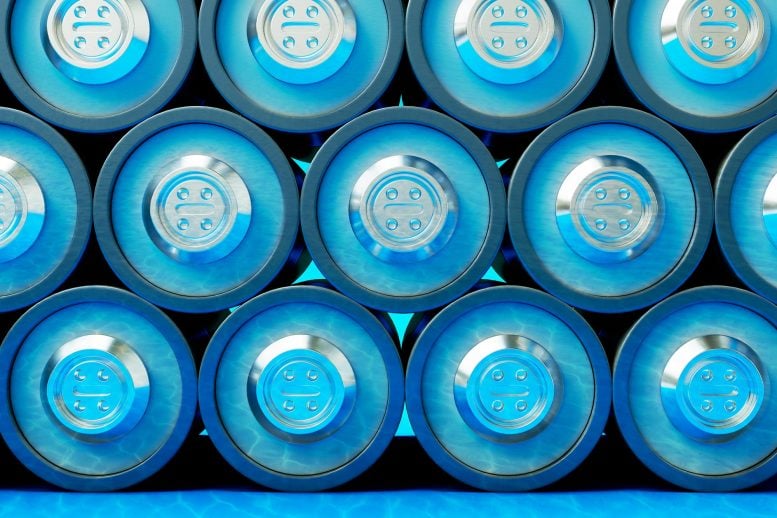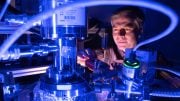
The newly developed LiDFOB electrolyte for lithium-ion batteries presents a cost-effective, highly conductive, and stable alternative to traditional lithium salts, enhancing battery performance and sustainability while simplifying production and recycling processes.
Scientists have developed an ultralow-concentration electrolyte for lithium-ion batteries.
Lithium salts enhance the power of batteries but also increase their cost. A new electrolyte with a very low concentration of the lithium salt LiDFOB could offer a cheaper and more sustainable option.
Cells using these electrolytes and conventional electrodes have been demonstrated to have high performance, as reported by a research team to the journal Angewandte Chemie. In addition, the electrolyte could facilitate both production and recycling of the batteries.
Challenges with Traditional Electrolytes
Lithium-ion batteries (LIBs) provide power to smartphones and tablets, drive electric vehicles, and store electricity at power plants. The main components of most LIBs are lithium cobalt oxide (LCO) cathodes, graphite anodes, and liquid electrolytes that deliver mobile ions for the decoupled cathode and anode reactions.
These electrolytes determine the properties of the interphase layer that forms on the electrodes and thus affect features such as battery cycling performance. However, commercial electrolytes are still mostly based on a system formulated over 30 years ago: 1.0 to 1.2 mol/L lithium hexafluorophosphate (LiPF6) in carboxylic acid esters (“carbonate solvent”).
Over the last ten years, high-concentration electrolytes (> 3 mol/L) have been developed, increasing battery performance by favoring the formation of robust inorganic-dominated interphase layers. However, these electrolytes have high viscosity, poor wetting ability, and inferior conductivity.
The large amounts of lithium salts required also make them very expensive, often a critical parameter for feasibility. To reduce costs, research has also begun into ultralow-concentration electrolytes (< 0.3 mol/L). The drawback for these has been that the battery cell decomposes more solvent than the few salt anions, which leads to an organic-dominated and less stable interphase layer.
Breakthrough with LiDFOB Electrolyte
A team led by Jinliang Yuan, Lan Xia, and Xianyong Wu at Ningbo University (China) and the University of Puerto Rico-Rio Piedras Campus (USA) has now developed an ultralow-concentration electrolyte that may be suitable for practical application in lithium-ion batteries: LiDFOB/EC-DMC.
LiDFOB (lithium difluoro(oxalato)borate) is a common additive and significantly cheaper than LiPF6. EC-DMC (ethyl carbonate/dimethyl carbonate) is a commercial carbonate solvent.
The electrolyte has a potentially record-breaking low salt content of 2 weight percent (0.16 mol/L) but a sufficiently high ionic conductivity (4.6 mS/cm) to operate a battery. In addition, the properties of the DFOB– anions allow for the formation of an inorganic-dominated, robust interphase layer on LCO and graphite electrodes, resulting in outstanding cycling stability in half and full cells.
While the LiPF6 in current use decomposes in the presence of moisture, releasing highly toxic and corrosive hydrogen fluoride gas (HF), LiDFOB is water- and air-stable. Instead of strict dry room conditions, LIBs with LiDFOB can be made under ambient conditions—an additional cost-saving feature. Recycling would also be significantly less problematic and lead to more sustainability.
Reference: “An Ultralow-concentration and Moisture-resistant Electrolyte of Lithium Difluoro(oxalato)borate in Carbonate Solvents for Stable Cycling in Practical Lithium-ion Batteries” by Zhishan Liu, Wentao Hou, Haoran Tian, Qian Qiu, Irfan Ullah, Shen Qiu, Wei Sun, Qian Yu, Jinliang Yuan, Lan Xia and Xianyong Wu, 14 March 2024, Angewandte Chemie International Edition.
DOI: 10.1002/anie.202400110
The study was funded by the National Natural Science Foundation of China, the Zhejiang Provincial Natural Science Foundation of China, the Ningbo Science & Technology Innovation 2025 Major Project, and the NSF Center for the Advancement of Wearable Technologies.









Be the first to comment on "A Cheaper and More Sustainable Lithium Battery: How LiDFOB Could Change Everything"